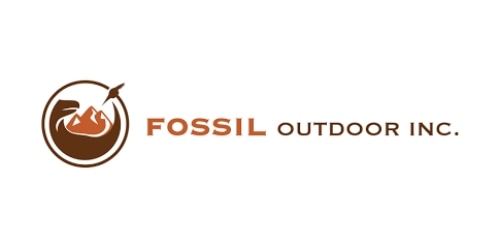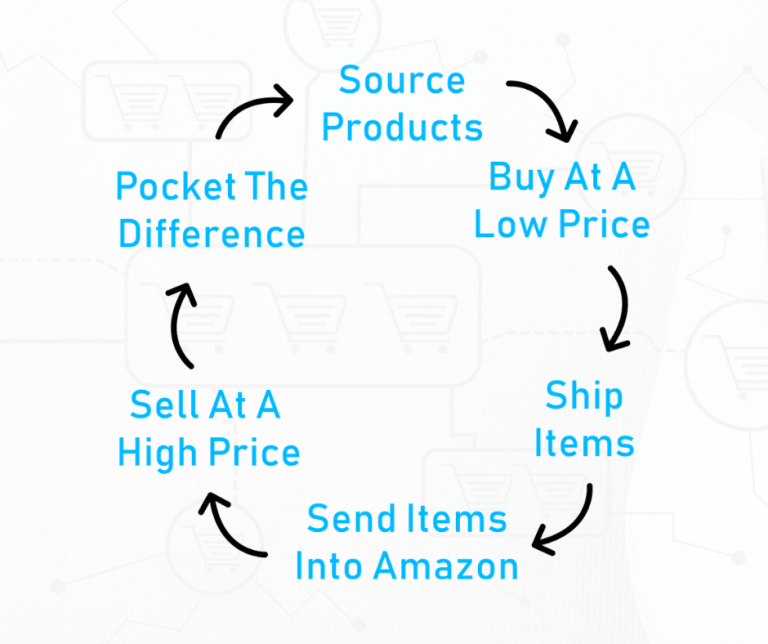
A retailer offers services to make customers' shopping more enjoyable and easy. These services include product displays as well as the hiring of salespeople. Retail stores generate high annual sales and provide a wide range of career options. They also provide a wide variety of products and services. The retail staff also distribute information about the products and the services to customers through signage, display, and sales personnel. Here are some of the most commonly-held retail jobs.
Wholesaler
Since long, the relationship between a wholesaler/retailer has worked well. To start a relationship with retailers, wholesalers typically approach them directly. What's the secret to making this relationship work for you? Here are some suggestions. Consider the strength of your products, your workforce, and your business channels before making a decision. It is important to always sell the highest quality products and ensure that you have a reliable sourcing system.
A retailer is an owner of a local store that purchases large quantities from a wholesaler to resell them to customers. The retailer acts as the face of the company for end users. Retailers pass on the wholesaler's discounts to the end user and often offer seasonal and cash discounts. These sales make both wholesalers and retailers profit. No matter what business you run, this relationship is vital to your success.
A wholesaler can be in close contact with both the customer and manufacturer. A wholesaler can remove the manufacturer from your equation if you purchase from them. The wholesaler can even add their own label to the product. An example of how wholesalers make money is by observing which products sell well. Next, you can focus your efforts on those products to grow and expand your business. There are many benefits. When you work closely with a wholesaler, you'll be able to improve your bottom line and make a profit from your efforts.
Both a wholesaler or retailer can compete for resale revenues. It is important to not lower the wholesalers' price. This will cause damage to the relationship. In order to prevent this, you should create separate price lists per vendor, each sales channel, and across vendors. This will help you not undercut your competitors and reduce your profit margins. This will help you understand the basics of this business model.
A wholesaler is the middleman between the manufacturer and the retailer. A wholesaler buys large quantities of products from manufacturers and sells them directly to retailers. The final consumer is then sold small quantities by the retailer. Typically, wholesale goods sell at a lower price than those purchased directly from the manufacturers. Because they are specialists in one product, and can sell many goods, a retailer is distinct from a wholesaler.
Fixed retailer
A fixed retailer is a type shop that specializes in a specific line of goods. The shop owner usually manages this type of retailer, along with a sales associate. Small fixed shops are generally located in residential areas, and they offer convenient shopping and often credit facilities. These shops offer a personal connection to their customers and the convenience of a fixed place of business. These are the key characteristics of Fixed Shops. Learn more about these businesses by reading the following.

Street stallholders operate out of stalls set up on the streets. These stores are not mobile and usually located in areas that have heavy foot traffic. Street stalls can't hold large inventories and so are limited to daily-use goods. However, it is important to note that fixed retailers may have a much larger inventory than a hawker or peddler. Fixed retailers are therefore more flexible than roving counterparts.
Fixed retailers operate on a small scale, selling a variety of goods from a fixed location. These retailers are also called "fixed shop" or "fixed-shop" retailers. They typically have a fixed shop and carry relatively small stocks of goods. Their ability to adapt to changing markets and their size is key to their success. Even small businesses have unique characteristics that can set them apart from larger ones. How can a fixed retailer get the most out of a small-scale, niche model?
Scale is the most important difference between an itinerant and a fixed-shop retail. While itinerant retailers operate from one location to another, fixed-shop retailers have a fixed place where they conduct their trade. A fixed-shop retail is established and has the resources to offer more service and products than an itinerant. Because they have a fixed location, the Fixed Retailer can operate on a large scale, but still operate on a small-scale basis. Small scale retailers can be set up quickly and don't need to involve other people.
Itinerant retailer
Non-itinerant retail is a retailer who has a fixed shop that sells goods to consumers. These retailers may operate on a small or large scale. Small-scale shops tend to sell a smaller variety of goods because they do not have a fixed location to keep goods. Larger shops have the capital to offer quality goods to their customers. These shops also have many products to choose.
The word "itinerant" comes from the word itinerary. It is pronounced "eye-TIN'-er-ant". An itinerary is a list that contains the traveler's plans, and their schedule. There are several types of itinerant retail, such as street traders, market traders, and hawkers. Itinerant retail may not have a store or fixed location, contrary to their name. They are also known as "hawkers" and "paddle traders".
The main advantages of an itinerant retailer are their low capital and the ability to move from place to place. Aside from this, they can provide personalized services to their customers. They can deliver everyday products to customers' homes. They are able to offer low-priced items that most people use every day. Unlike traditional retail businesses, they don't require a large capital investment, and their prices are often low compared to their competitors.
The term "itinerant merchant" is used in the United States to describe a retail trader who does not reside within a building. In this type of retail trade, a seller sells goods outside a building, often by ferrying from one place to another. This type of merchant may not be legal in every place. As long as they have the necessary permits and do not exceed 180 days per calendar year, itinerant retailers can operate legally.
Service provider

Remember that service providers can differ in terms of their costs, customer support, and language. Most retailers expect some support for any issues that arise in-store. PSPs often offer support and guidelines for customers having trouble with online payments. Online merchants are more at risk than other businesses for rejection of payments. High rejection rates can adversely impact profits, and lead to higher payment processing costs and collection and warning fees.
The retail landscape has become more complex with omnichannel and online shopping. Retailers have to find ways that optimize their supply chains, and maximize staff efficiency, despite the fact that margins are still very thin. Cybersecurity threats still pose a grave threat to consumer information, making it difficult to create differentiated customer experiences. As a result, retailers should look for specialized solution providers to complement their traditional strengths. RMS is an experienced Preferred Service Provider in this area.
A service provider provides physical products along with related services to create the ultimate shopping experience. The retailer is clearly a provider of services. It offers enhanced customer experience, multiple payment options, and provides demonstrations and advice. A service provider offers convenience and loyalty to its customers. This is a perfect business model to sell. Service retailers are able to build customer loyalty and increase profits while still offering the best in-class service.
FAQ
It is better to shop online with credit cards than without.
Credit card companies offer many benefits including free shipping, cashback, and rewards programs. You also have protection from fraud. People should consider them over debit card because they don't have any fees.
Customers who need to pay off their balance on time will also be able to use credit cards. Credit cards allow you to shop without worrying about how much money is left in your account.
Do rewards and insider programmes worth signing up?
Although rewards can be great, they are not always worth the effort. If you do decide to join an online program, make sure there is value in what you are getting. It's important that you know exactly how much you'll spend on it.
Do not sign up just for the bonus. Sometimes these signup bonuses are not worth the hassle.
It is important to ask yourself why you want a reward program before you join. Many people join because their friends do it. You won't enjoy the company's products or services if that is the case.
Do I need to worry about my privacy when I shop online?
It's important for consumers to know what information they are giving away when they use an online service such as Amazon.com. Amazon.com should be asked if consumers want to share any personal information. If you don't wish to share such information, you may need to limit your shopping experience on sites you feel comfortable sharing your private details.
How can I make sure that I get the most for my money when purchasing clothes online?
There are many things you can do online to get the best price for your clothes. First, you should take advantage of free shipping promotions offered by some retailers. These promotions often offer free delivery within Australia.
The second thing you need to do is check out the returns policy of the website before you make your purchase. Some websites allow customers to return their items within 30 day of receiving them. Others offer refunds only for items returned within 14-days.
Third, look into customer reviews of the retailer you're considering buying from. This will help you determine whether or not they are reliable and reputable.
Fourth, compare prices between different retailers. There are plenty of comparison websites available where you can view prices from various retailers side-by-side.
Finally, keep in mind that there are often sales and coupon codes available for certain brands or types of clothing. Keep checking the site for any new discounts.
Statistics
- The tax is automatically added once you click the checkout button, so factor in an additional 20% when looking at the product page. (makeuseof.com)
- An approximately 90% increase in price affords Hotel X the opportunity of extreme profits under severe circumstances. (dos.ny.gov)
- Last Black Friday, I bought a stove from Lowes at 40% off, receiving 24 months of interest-free financing (from Lowe's). (meetfabric.com)
- Beyond that, you'll be liable for a 25% import tax. (makeuseof.com)
External Links
How To
How to shop for Groceries on a Budget
This Topic is about grocery shopping on a limited budget.
There are many methods to shop for groceries within your budget. You could use coupons or buy generic products. Get free samples. Check out sales at your local grocery store.
These tools can help you find the best deals.
Coupons
Coupons can help you save on groceries. The full price of a product is paid if it's not purchased with coupons. You can save money on certain types or brands of food by using coupons.
Printing a list of coupons in your region is one example. After you have completed your list, look through it and find any coupons.
You may consider buying the brand, even if there are no coupons. This will give you a better return on your investment.
Check Out Sales
You should also keep an eye on what's selling at your local supermarket. You may find special deals and promotions at some stores. For example, some stores will sell one-pound bags of rice for 99 cents.
Before purchasing similar items, check out their prices. You may be tempted to buy the same item from another place if it is cheaper elsewhere.
To compare the prices at different supermarkets, you might want to go to several. Visit multiple locations in your area to compare their prices.
Shop Around
There are often great deals to be found when you shop around. You need to be able to find the best deals.
The difference between the regular price (sale price) and the sale price is essential. The discounted price is the sale price. It is not always possible to get a discount price.
The item's actual price is the regular price. It is important to compare these prices in order to determine if the deal you are receiving is worth it.
Compare the original and current prices of products that have been reduced in price.
Compare the original price to find a discounted product.
If you find a product with a higher original price than the others, it is worth checking if that price has dropped.
Be sure to read the fine print
It is important to always read the small print before you buy. You'll often find out what you missed when you buy the item.
It is possible to miss important information, such as shipping charges and taxes, if an item is purchased via a website.
It is important to carefully read all descriptions. Sometimes, the description of the item will say it is sold "as Is."
This means that you won't receive any warranties or guarantees. You cannot also return an item that doesn't work as expected.
Take Care When You Order Online
Remember to be cautious when ordering online. Many scams happen online.
Some individuals will attempt to steal credit card numbers and steal your identity. To trick customers into providing personal information, others use fake websites.
Many people who run these websites ask for sensitive information, such passwords, social media numbers, and bank account details.
Online fraudsters make it easy to fall for them. You should not enter financial information on a website unless you are confident in their authenticity.
Always confirm that the website you're going to use has a valid address. You should also check the address bar for any hidden messages that may direct you to a fraudulent site.